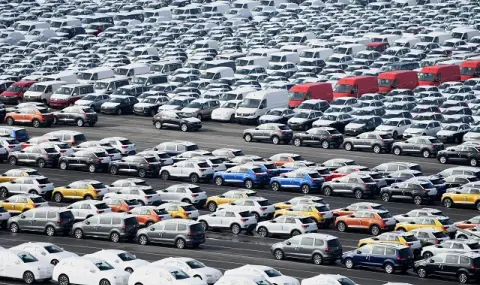Decreasing car sales with an electric motor have consequences that are not noticeable at first glance. In Europe, more new cars are currently being imported than are being sold, and this is causing problems.
Cars are a more special commodity: on the one hand, they represent a separate product that is delivered “in pieces”, but on the other hand, their dimensions do not allow them to be arranged on a shelf. One car takes up to ten square meters of space – even when not in use. And this is definitely a challenge for ports where cars arrive by ship. In Germany, for example, this mainly affects two terminals – those at Emden and Bremerhaven. The one in Bremerhaven is one of the largest car ports in the world.
Changed aspect ratio
DV learned from the terminal operator BLG Logistics Group that they process more than 1.7 million cars there annually. The port has space for around 70,000 vehicles. According to company spokeswoman Julia Wagner, car processing has changed in recent years: "For a long time we had 80% exports and 20% imports. Now that ratio is 50:50," she says.
In Zeebrugge, Belgium, twice as many cars are loaded as in Bremerhaven. It is currently clogged with new cars that have arrived by ship but not transported further down the chain. Elke Werbelen from the communications department of the ports of Antwerp and Zeebrugge tells DV that this is currently happening in all major European ports that accept cars.
The fact that cars arriving by ship are stuck at the port terminals is not only due to the huge volume of imported cars: "The problem is rather the fact that they are not removed quickly from the ports," says Julia Wagner.
Where they come from and where they go
Car transport is a complex and not particularly transparent activity – at least that's how it seems at first glance. Western manufacturers like Tesla, for example, manufacture their cars in China and then ship them to Europe. At the same time, many car manufacturers produce their cars for the American or Asian markets locally – including to avoid paying import duties.
In addition, there are also cars that remain hidden even from the operators of these ports because they are transported “packaged“ in containers. This type of transport is often used by private individuals or traders who send individual numbers of cars. And since they are in containers, they don't take up any parking space in the usual ports.
A lot has changed in recent years. For example, the number of cars at ports remains high or increases because buyer habits have changed. There are also economic reasons for the high workload of parking lots at the ports – the relatively low sales of electric cars. Julia Wagner confirms this: "The idle time of cars from all manufacturers increased after the end of government subsidies for electric cars. In Germany, sales fell“, she says.
The land transport problem
It is true that overall car sales are growing, but they have not yet reached the level before the coronavirus pandemic, Elke Werbelen from the ports of Antwerp and Zeebrugge also points out. Another factor is the shortage of truck drivers who take the new cars to dealers. This also prolongs the stay of cars imported by sea at the ports.
